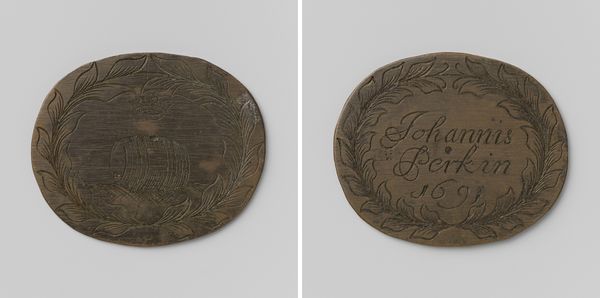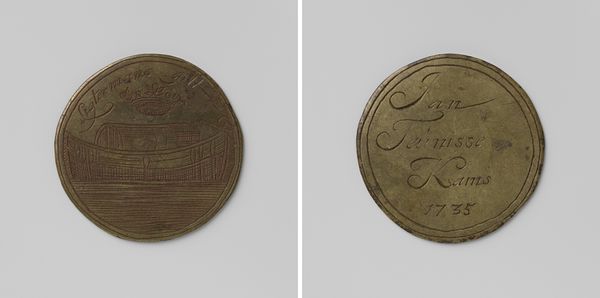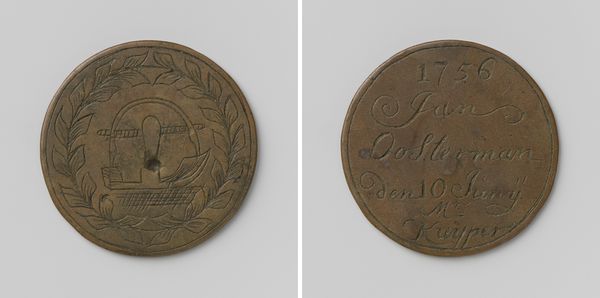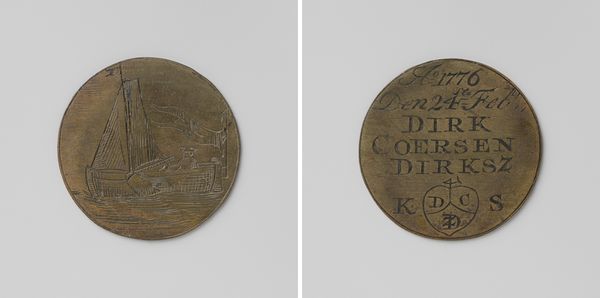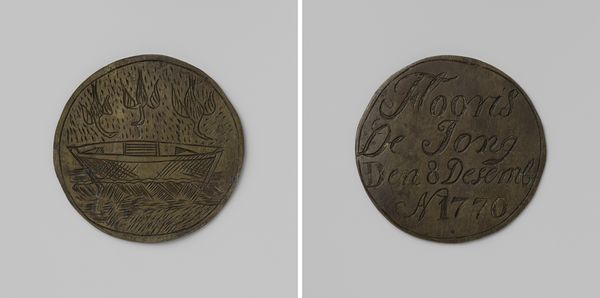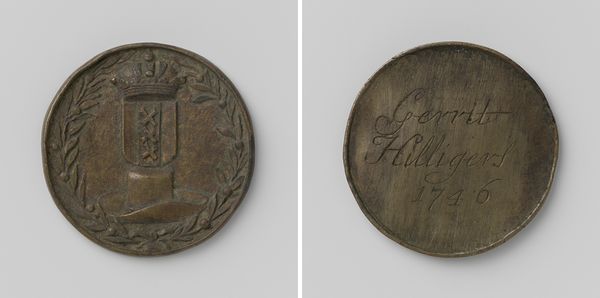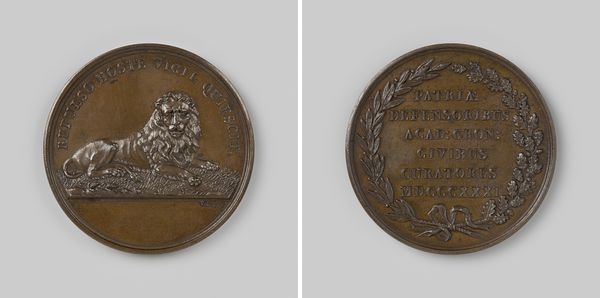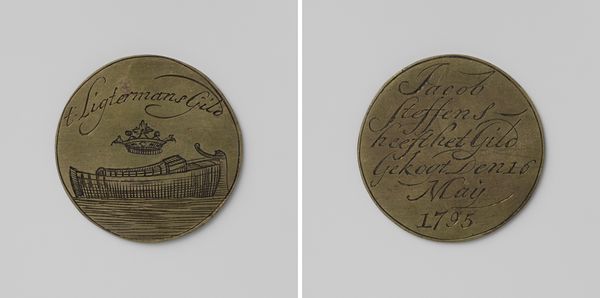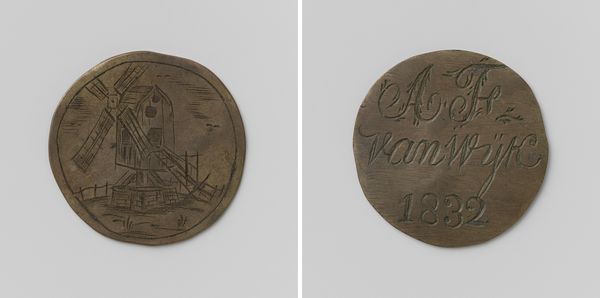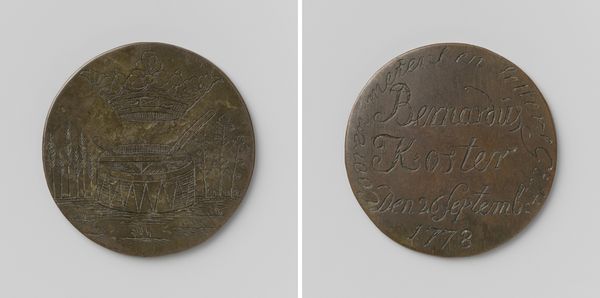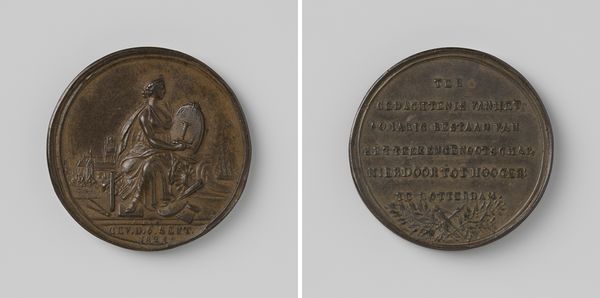
Kuipers- en wijnverlatersgilde van Amsterdam, gildepenning van Arent Harmelingh, meester kuiper 1732
0:00
0:00
graphic-art, carving, metal, relief, bronze, engraving
#
graphic-art
#
medieval
#
carving
#
metal
#
relief
#
bronze
#
carved
#
engraving
Dimensions: diameter 4.1 cm, weight 24.18 gr
Copyright: Rijks Museum: Open Domain
This guild token was made in Amsterdam in 1732, and its anonymous maker worked in bronze. The token was commissioned to mark the occasion of Arent Harmelingh becoming a master cooper, a maker of barrels. The material itself, bronze, is significant. Its relative durability compared to other metals made it suitable for the striking of coins and medals at this time, and affordable enough to be used for these commemorative purposes. But it is the imagery on the token that really tells us about the cooper's trade. On one side we see the tools of the cooper's trade; on the other, a dedicatory inscription. This brings a key question to mind: what exactly was the point of a guild? They controlled trades and the labour within them, and a guild token was a means of quality control, advertising, and self-identification, all rolled into one. Recognizing the cultural importance of materials and making allows us to understand this token not just as an artwork, but as a material trace of a whole system of production.
Comments
No comments
Be the first to comment and join the conversation on the ultimate creative platform.
